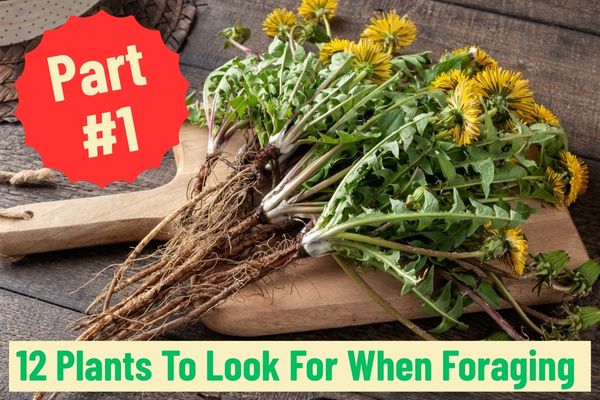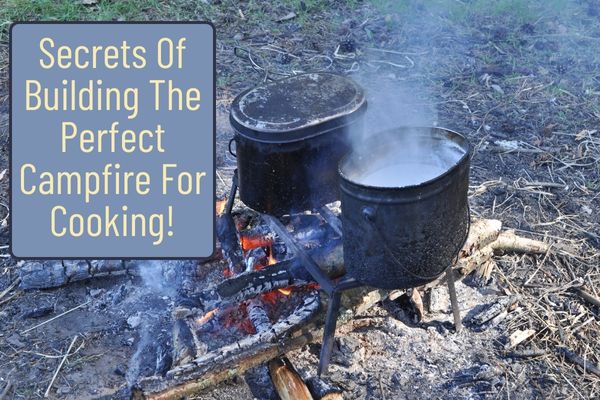Disclaimer: Always consult with healthcare professionals before using wild plants medicinally. Proper plant identification is crucial. When in doubt, don’t consume. Start with small amounts to test for allergic reactions.
Our ancestors lived intimately with the natural world.
They understood which plants could nourish, heal, and sustain them through challenging times.
While modern life has distanced us from this knowledge, learning to identify edible and medicinal wild plants remains a valuable skill that connects us to nature while providing emergency nutrition and natural remedies.
Foraging requires patience, respect for the environment, and most importantly, absolute certainty in plant identification.
The plants discussed below are relatively safe for beginners, but always verify identification with multiple reliable sources before consumption.
1. Dandelion (Taraxacum officinale)
Identification:
Deeply lobed leaves form a basal rosette.
Bright yellow composite flowers appear on hollow stems, followed by white puff-ball seed heads.
All parts contain white, milky latex.
Nutritional Benefits:
Dandelion greens contain more vitamins A and K than spinach, plus significant amounts of vitamins C and E, folate, and potassium.
Medicinal Properties:
Supports liver function and acts as a natural diuretic.
The bitter compounds stimulate digestion. Roots contain inulin, beneficial for gut health.
Foraging:
Found in lawns, fields, and roadsides.
Best harvested in early spring before flowers appear, when leaves are less bitter.
Harvest the roots in the fall, when they are most nutritious.
Preparation:
Young leaves are excellent in salads or sautéed.
Roots can be roasted as a coffee substitute.
Flowers make wine or can be battered and fried. Remove the bitter white latex if desired.
2. Watercress (Nasturtium officinale)
Identification:
Small, round to oval leaflets arranged in pairs along stems, with a larger terminal leaflet.
Grows in or near clean, flowing water.
Has a peppery, mustard-like taste.
Nutritional Benefits:
Extremely nutrient-dense with vitamins A, C, and K, plus calcium, iron, and folate.
Often called a superfood for its nutrient concentration.
Medicinal Properties:
Contains compounds that may support lung health and have anti-cancer properties.
High antioxidant content.
Foraging:
Grows in clean streams, springs, and wet areas.
Harvest from unpolluted water sources only.
Cut stems above water level, leaving roots intact.
Preparation:
Excellent raw in salads or sandwiches.
Can be added to soups at the end of cooking.
Always wash thoroughly and avoid areas where livestock graze upstream.
3. Wild Raspberry and Blackberry (Rubus species)
Identification:
Thorny canes with compound leaves typically in groups of three or five.
White flowers followed by aggregate berries. Raspberry canes are biennial.
Nutritional Benefits:
Berries are rich in vitamin C, fiber, and antioxidants.
Leaves contain tannins and various beneficial compounds.
Medicinal Properties:
Raspberry leaf tea is traditionally used to support women’s health.
Berry antioxidants support immune function and may reduce inflammation.
Foraging:
Common along forest edges, clearings, and roadsides.
Berries ripen summer through early fall. Harvest young leaves in spring.
Preparation:
Berries eaten fresh or made into preserves.
Young leaves can be dried for tea.
Remove thorns when harvesting leaves.
4. Stinging Nettle (Urtica dioica)
Identification:
Stinging nettle grows 2-6 feet tall with serrated, heart-shaped leaves arranged oppositely on square stems.
The entire plant is covered in tiny hairs that inject formic acid when touched, causing a burning sensation.
Nutritional Benefits:
Nettles are nutritional powerhouses containing more protein than most vegetables, along with vitamins A, C, and K, iron, calcium, and potassium.
They’re particularly rich in chlorophyll and minerals.
Medicinal Properties:
Traditionally used for arthritis, allergies, and urinary tract health.
The anti-inflammatory compounds may help reduce joint pain and seasonal allergy symptoms.
Foraging:
Found in moist, nitrogen-rich soils near streams, gardens, and disturbed areas.
Harvest young leaves in spring before flowering.
Wear thick gloves and use scissors to cut the top 4-6 inches.
Preparation:
Cooking or drying neutralizes the sting.
Steam like spinach, add to soups, or dry for tea.
The leaves lose their sting within minutes of cooking.
5. Wild Onion (Allium canadense and related species)
Identification:
Grass-like leaves emerging from bulbs, with a strong onion smell when crushed.
Flowers appear in umbels (umbrella-like clusters).
Always has the characteristic onion scent.
Nutritional Benefits:
Contains vitamins C and B6, plus sulfur compounds beneficial for cardiovascular health.
Medicinal Properties:
Antimicrobial and anti-inflammatory properties.
May help reduce blood pressure and cholesterol levels.
Foraging:
Found in fields, meadows, and open woods.
Harvest bulbs in fall or early spring. The onion smell is the key identifying feature.
Preparation:
Use bulbs like cultivated onions in cooking.
Young leaves can be chopped like chives.
Bulbs can be pickled or dried for preservation.
6. Broadleaf Plantain (Plantago major)
Identification:
This low-growing perennial has broad, ribbed leaves with 3-7 prominent parallel veins running from base to tip.
Leaves form a basal rosette, and tall, thin flower spikes emerge from the center.
Nutritional Benefits:
Rich in vitamins A and C, calcium, and potassium. Young leaves are tender and mildly bitter.
Medicinal Properties:
Known as “nature’s bandage,” plantain has anti-inflammatory and antimicrobial properties.
Fresh leaves can be chewed and applied to minor cuts, bee stings, and insect bites.
Foraging: Common in lawns, roadsides, and disturbed areas worldwide.
Available spring through fall. Harvest clean, young leaves.
Preparation: Young leaves are excellent raw in salads.
Older leaves should be cooked like spinach.
Make a poultice by chewing fresh leaves or crushing them for topical application.
7. Crabapple (Malus species)
Identification:
Small trees with five-petaled pink or white flowers, followed by small apples typically less than 2 inches in diameter.
Leaves are simple and serrated.
Nutritional Benefits:
High in vitamin C and fiber.
Contains pectin, beneficial for digestive health.
Medicinal Properties:
Traditionally used for digestive issues.
The pectin helps regulate blood sugar and cholesterol levels.
Foraging:
Found in woods, old homesteads, and naturalized areas.
Fruit ripens late summer through fall. Look for fruits without worm holes.
Preparation:
Very tart raw but excellent cooked into jellies, sauces, or baked goods.
Remove seeds before consumption. Can be dried for winter storage.
8. Wild Mint (Mentha arvensis and related species)
Identification:
Square stems, opposite leaves with serrated edges, and the distinctive minty aroma when crushed.
Small purple or white flowers appear in clusters.
Nutritional Benefits:
Contains vitamins A and C, plus trace minerals.
Low in calories but high in antioxidants.
Medicinal Properties:
Aids digestion, relieves nausea, and has antimicrobial properties.
Menthol provides cooling and pain-relieving effects.
Foraging:
Grows in moist areas near streams, ponds, and marshy ground.
Harvest leaves throughout the growing season, but flavor is best before flowering.
Preparation: Fresh leaves make excellent tea, can be added to salads, or used as seasoning.
Dry leaves for winter use. Crush fresh leaves to release oils for aromatherapy.
9. Cleavers (Galium aparine)
Identification:
Weak, sprawling stems covered in tiny hooks that make the plant stick to clothing.
Narrow leaves in whorls of 6-8 around square stems.
Small white flowers.
Nutritional Benefits:
High in vitamin C and chlorophyll.
Contains moderate amounts of calcium and potassium.
Medicinal Properties:
Traditionally used as a lymphatic cleanser and diuretic. May support kidney and skin health.
Foraging:
Common in gardens, hedgerows, and woodland edges.
Harvest young shoots in spring before they become too tough and sticky.
Preparation:
Young shoots can be steamed or added to soups.
Makes a nutritious green juice when blended with water.
Dry for tea.
10. Wood Sorrel (Oxalis species)
Identification:
Heart-shaped leaves arranged in groups of three (like clover), with delicate five-petaled yellow, white, or purple flowers.
Leaves fold down at night. Has a distinctive sour taste.
Nutritional Benefits:
High in vitamin C (historically prevented scurvy).
Contains moderate amounts of vitamins A and E.
Medicinal Properties:
The sourness comes from oxalic acid, which has mild antibacterial properties.
Traditionally used for fever reduction.
Foraging:
Common in shaded woods, gardens, and lawns.
Available spring through fall.
Harvest leaves and flowers, avoiding areas with heavy oxalate accumulation.
Preparation:
Excellent fresh in salads, providing a lemony tang.
Can be cooked like spinach but loses vitamin C.
Use sparingly (high oxalic acid content means moderation is key).
11. Elderberry (Sambucus canadensis)
Identification:
Large shrub with compound leaves of 5-9 serrated leaflets.
Creamy white flowers in large, flat-topped clusters, followed by dark purple berries.
Nutritional Benefits:
Berries are rich in vitamins A and C, plus anthocyanins (powerful antioxidants).
Medicinal Properties:
Well-researched for immune support, particularly against upper respiratory infections.
Flowers have anti-inflammatory properties.
Foraging:
Found along streams, forest edges, and disturbed areas.
Flowers appear in early summer, berries in late summer.
Only harvest ripe, dark purple berries.
Preparation:
Flowers can be battered and fried or made into cordial.
Berries must be cooked (raw berries can cause digestive upset).
Excellent for syrups, jams, and tinctures.
12. Wild Brassicas (Brassica and related genera)
Identification:
This family includes wild mustards, garlic mustard, and field pennycress.
Generally have four-petaled flowers in cross formation, alternate leaves, and a peppery taste.
Nutritional Benefits: High in vitamins A, C, and K, plus calcium and iron.
Contains beneficial glucosinolates.
Medicinal Properties:
Compounds in brassicas have anti-inflammatory and potentially anti-cancer properties.
Support cardiovascular health.
Foraging:
Common in fields, roadsides, and disturbed areas.
Garlic mustard grows in shaded woods.
Harvest young leaves in spring for best flavor.
Preparation:
Young leaves are excellent raw or cooked.
Seeds can be ground as a mustard substitute.
Flowers are edible and add color to salads.
Foraging Ethics and Safety Guidelines
Sustainable Harvesting:
Never harvest more than 1/3 of any plant population.
Leave the roots intact when possible and avoid harvesting rare or stressed plants.
Rotate harvesting locations to prevent over-exploitation.
Safety Considerations:
:: Always carry multiple field guides and cross-reference identifications
:: Avoid areas treated with pesticides or polluted by traffic
:: Get landowner permission on private property
:: Check local regulations (some areas prohibit foraging)
:: Start with small amounts to test for allergic reactions
Positive Identification:
Never consume anything you cannot identify with 100% certainty.
Some edible plants have toxic look-alikes. For example, water hemlock resembles watercress but is deadly poisonous.
Preparation and Storage:
Clean all foraged materials thoroughly.
Most wild greens should be cooked to improve digestibility and reduce potential pathogens.
Dry surplus materials for winter use, or freeze after blanching.
Ready … Set … Forage
Foraging connects us with ancestral wisdom while providing valuable nutrition and natural remedies.
These twelve plants represent just a fraction of the edible and medicinal plants available in most temperate regions.
As you develop your foraging skills, always prioritize safety, sustainability, and respect for the natural world.
Start with the most common and easily identified species like dandelions and plantain, gradually expanding your knowledge as confidence grows.
Consider joining local foraging groups or taking guided walks with experienced foragers to accelerate your learning safely.
Remember that wild plants are supplements to, not replacements for, a balanced diet and proper medical care.
The goal is to develop a deeper relationship with the natural world while gaining valuable skills that are considered essential knowledge for skilled preppers.




